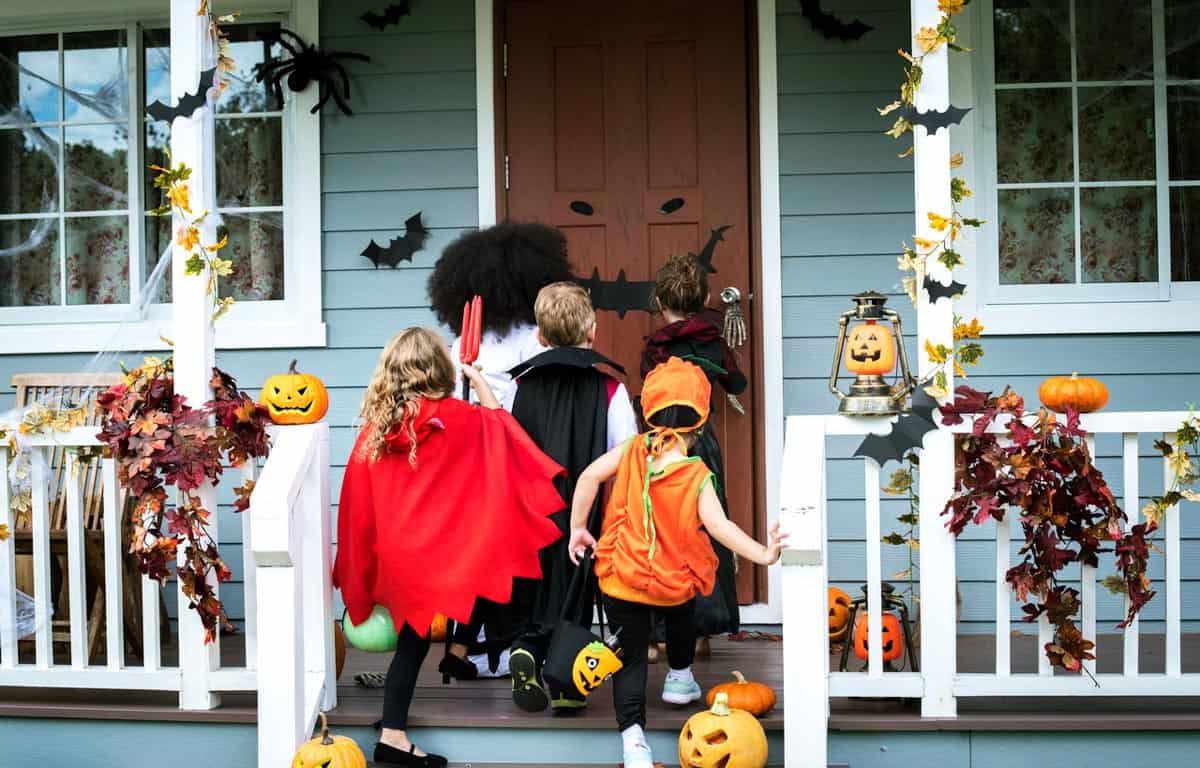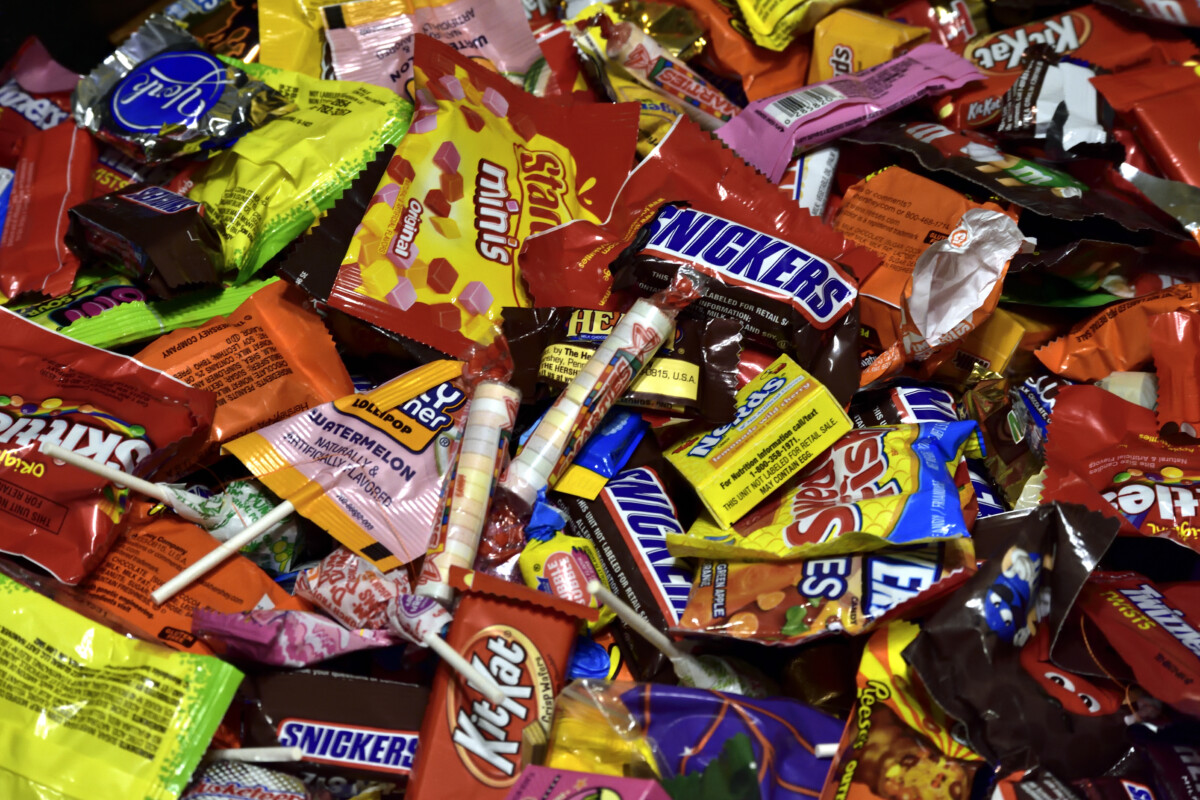Lauren McIlwaine, MSc, MPH, RD, LDN – Guest Post Writer
As crisp, autumn air finally settles into North Carolina, ghosts and cobwebs are appearing on doorsteps in every neighborhood. Excitement for this week’s Halloween festivities is contagious, and many families are getting prepared for trick-or-treating in their communities. With this infectious energy also comes questions about how to handle one of the main focuses of Halloween: candy.
Do you wonder how to manage Halloween candy?
- “Do we let our kids eat whatever they want?”
- “How long should they be in charge of their candy?”
- “What if they get a bellyache?”

Let’s walk through some guiding principles to help Halloween be spooky, fun and not stressful.
Set the tone for a low-stress Halloween
In general, your children are constantly picking up on your cues about how to handle all eating situations. When you feel anxious about the food options or an eating environment, your children may internalize these feelings. If you are relaxed, they will feel more at ease.
Present yourself as confident with how you want to handle Halloween candy (note: it is ok to act confident even if you aren’t!). Answer any of their questions with clear, concise answers, and don’t engage in power struggles. Be consistent. Be present. Be calm.
Focus on Halloween fun and not diet culture rules
Just as your children read your tone about eating, they learn how to celebrate holidays by following your lead. Instead of worrying about kids eating candy, get involved in the fun. By demonstrating that candy is only one aspect of the holiday, sweets lose some of their “power.”
- Wear a silly Halloween costume (or just something simple if that’s more your style). Choose a specific night this week to watch your favorite Halloween movie.
- Pick a few fun Halloween games to play.
- If you’re feeling ambitious, meet a local farmer and pick pumpkins directly from the vine.

Meals and snacks on Halloween
On Halloween, it is first important to serve your routine meals and snacks throughout the day. Make sure your children are offered balanced meals (carbohydrate + protein + fat + fruit or veg) and an after-school snack. Ensure that you have given them ample opportunities to meet their nutritional needs with a variety of foods.
Don’t hold back on serving carbohydrates in anticipation of them overeating sweets that evening; we want our children to see that all foods fit!
Expert tips for how to handle Halloween candy
After a fun evening of trick-or-treating, follow Ellyn Satter’s approach to Halloween candy: “When he comes home from trick-or-treating, let him lay out his booty, gloat over it, sort it and eat as much of it as he wants.”1 Research shows that labeling a food as “off limits” may result in a negative relationship with that food and/or overeating that food when it is finally permitted.2
Allow your children to have this moment to bask in the glory of Halloween without limits. If you restrict their intake on Halloween night, they are more likely to hyper-focus on getting more candy on subsequent days.

In addition, as Satter explains, part of normal eating is “overeating at times…feeling stuffed and uncomfortable” while also trusting your body to “make up for mistakes in your eating.”3 Your children may overeat and have bellyaches. That’s ok. Let them learn from experience.
After Halloween continue to follow the Ellyn Satter Division of Responsibility
On the day after Halloween, per Ellyn Satter’s instruction, continue to let them eat what they want. Then, on subsequent days, begin letting them incorporate candy into their meals and snacks per Division of Responsibility.4 If they can stick to their roles, they can be in charge of their candy. If they are unable to follow the rules, you take over.
Candy should be kept in the kitchen but not hidden. If they beg for candy in between meals and snacks, you can gently remind them that there will be an opportunity to eat some at the next meal or snack soon.
Don’t make judgments about candy
In our diet-obsessed world, it can be easy to fall into the diet culture mentality and make judgments about eating candy. During Halloween (and Thanksgiving and Christmas!), refrain from making judgments about your children, yourself, or other people for eating candy.
Let kids see adults eat candy
Add some candy to your own meal or snack, and eat without verbal judgment. Discuss your favorite candy with your children from an objective point of view (e.g. “I love Reeses because it melts in my mouth!”) rather than saying anything about calories.
Take an “all foods fit” approach to what you eat. When in doubt, remember one thing: Halloween will come and go. You & your children will be just fine.
Have a happy (and safe) Halloween!
An expert tip from an anti-diet dietitian
It may be a tall order to be relaxed around food if you have struggled with any disordered eating or were not raised in a relaxed eating environment. We completely understand. For more information about how to start a new chapter with food, further explore this blog & the Resources tab!
Related blog posts
- A Simple Guide to Eliminate Diet Culture from Halloween from 2 Registered Dietitians
- Let’s Talk about Sugar
- Podcast Ep. 17: Diet-Culture Free Holidays with Hailey Goodrich
Guest author
Lauren McIlwaine, MSc, MPH, RD, LDN is a nutrition therapist with Lutz, Alexander & Associates Nutrition Therapy in Raleigh, NC. She specializes in nutrition therapy for children, adolescents, and adults with eating and feeding disorders. She also specializes in family feeding (supporting parents in staying out of the food battle) and geriatric nutrition.
Lauren received a Bachelor of Arts in Psychology from Georgetown University, a Master of Science in Health Psychology from the University of St Andrews in Scotland, and a Master of Public Health in Nutrition from The University of North Carolina at Chapel Hill. Most recently, she was a clinical dietitian at Veritas Collaborative where she worked with adolescent eating disorder patients requiring inpatient, residential, partial hospitalization, and intensive outpatient services. She also previously worked in research, helping to investigate the most effective treatments for various eating disorders. She is passionate about helping families create positive relationships with food, helping individuals debunk nutrition myths, and spreading positive messages about nutrition on social media. She is also passionate about collaborating with older adults to support them in fueling their bodies well.
Lauren sees clients in Raleigh, NC and virtually. To contact Lauren directly to set up a consultation, email her at [email protected].
Resources
- Satter, E. (2019). The sticky topic of Halloween candy. Retrieved from Ellyn Satter Institute.
- Alves, J. (2016, Oct 12). How dieting can lead to binge eating – Jean Alves. Retrieved from Eating Recovery Center.
- Satter, E. (2019). What is normal eating? Retrieved from Ellyn Satter Institute.
- Satter, E. (2019). Division of responsibility in feeding. Retrieved from Ellyn Satter Institute.





